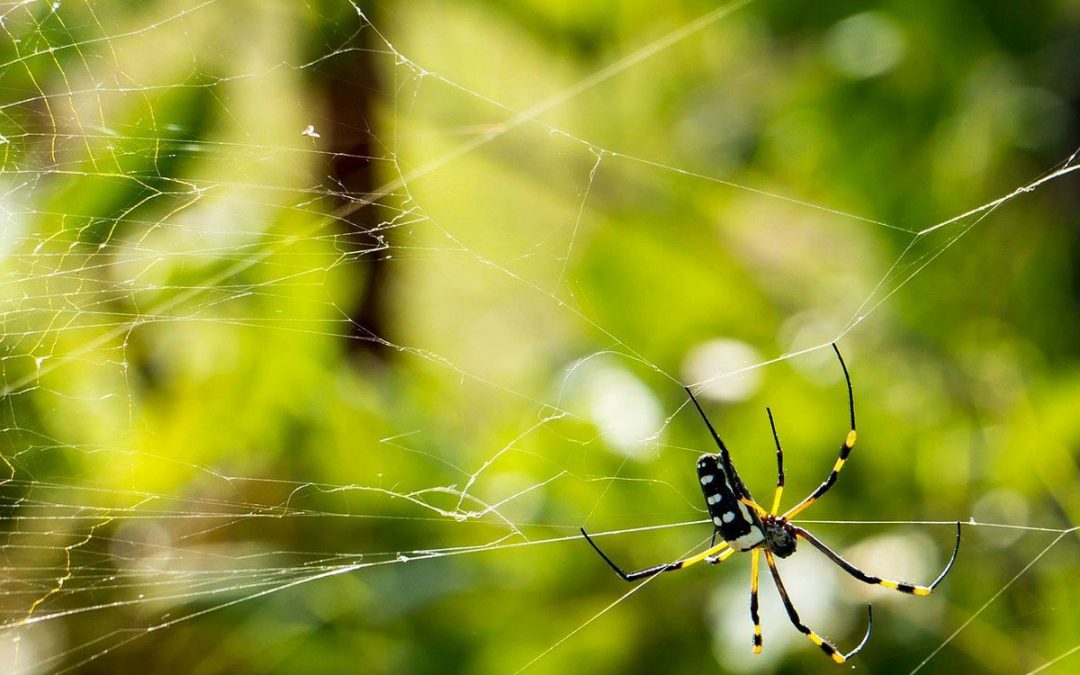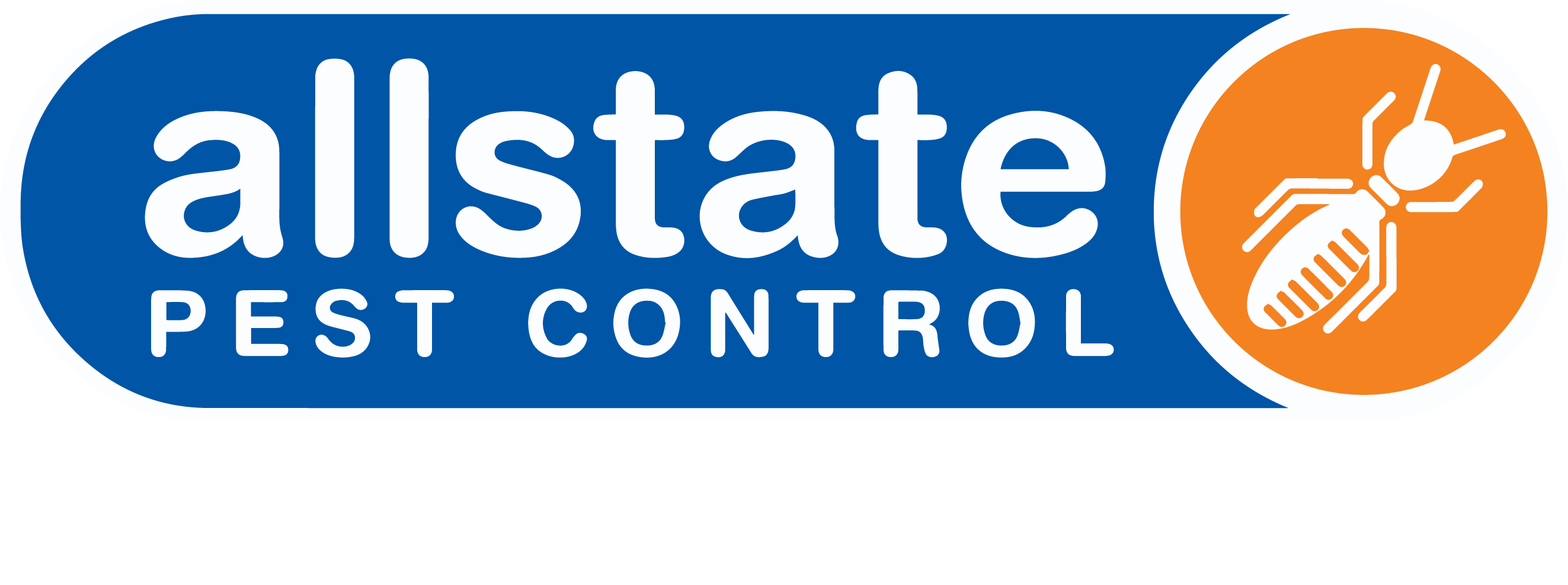
Your Guide to Spider Control in Adelaide
YOUR GUIDE TO SPIDER CONTROL IN ADELAIDE
From the Redback and Funnel Web to the hairy Huntsman, Australia is home to an estimated 10,000 species of spiders. You’ll most definitely have come across them crawling around your home or business at some point.
They can be a nuisance by weaving sticky, messy cobwebs wherever they please, and aren’t afraid to bite if they feel threatened. Females can lay hundreds of eggs all at once, so it doesn’t take long for an outbreak to happen.
For those who are afraid of spiders, this can be a real worry, but luckily, Allstate Pest Control can help.
If you suspect that you have a spider problem, continue reading to find out about the most common types of spiders that could be responsible, the problems they cause and how to prevent and treat an outbreak.
What questions will this article answer?
Types of spiders
Identifying the species of spider causing an outbreak can be helpful as some spiders are more venomous than others.
Problems caused by spiders
Here’s some issues that these pesky creatures can cause indoors and outdoors
Signs of a spider infestation
How to tell if spiders have decided to settle in your building or yard.
How to prevent spider outbreaks
Learn about how to stop spiders from being attracted inside and entering buildings.
Spider outbreaks in businesses
Spiders can cause various problems in warehouse and distribution facilities, as well as hotel and accommodation facilities, and put your business reputation at risk.
How to control a spider outbreak
There are chemical and natural treatments as well as repellents that are effective against spiders.
Professional spider prevention
Our approach involves an initial assessment and inspection of the problem, treatment and follow up so that you are protected from another outbreak in the long term.
Why choose Allstate?
Our experienced pest control technicians are fully equipped and available 24/7, to all suburbs of Adelaide, to help with any spider concerns. Our treatments come with a comprehensive warranty and the chemicals we use are safe towards children, pets and the environment.
Types of spiders
Although there are many different species of spiders, bites from some common household spiders are more venomous than others. Even though most bites are unlikely to make you very sick, it’s still helpful to know which spiders to avoid, and where they prefer to live. Let’s get to know some of them:
White-tail spider (also known as white tip spiders)
- 1.2-1.8 cm, dark reddish grey colour with white tip
- Not considered venomous to humans but cause a painful, itchy bite
- They tend to live under rocks and leaf litter in the garden
Black house spider
- Venomous
- 1-1.5cm length, grey abdomen, dark brown to black legs
- Cobwebs look like untidy lacy sheets with a funnel-like entrance
- Prefer tree trunks, logs, rocks, walls and buildings – especially window frames and crevices
- Look for them in dark corners of windows, sheds, verandas, and fences
Brown house spider (cupboard spider)
- Up to 1.2cm length, yellow-brown body with faint markings, pale grey-brown abdomen with short hairs
- Spin sheet-like cobwebs
- Find them in buildings, walls and sheds
Redback spider
- Venomous – seek medical attention immediately if bitten
- Up to 15mm long, has a distinctive orange-red stripe on its abdomen
- Commonly found in dark, dry areas – particularly under logs or rocks in the bush, roof eaves, floorboards, shelves, flower pots and garden sheds
Funnel web spider
- Venomous – seek medical attention immediately if bitten
- Up to 35mm long, black or brown, with glossy and segmented looking legs
- Prefer moist, cool, sheltered habitats outside – under rocks, in rotting logs, crevices, timber rot and borer holes in trees
- Can survive up to 2 days in a swimming pool
Daddy long legs
- Brown, 7-9mm, characterised by long, thin legs
- Live in houses, garages, sheds
- Have spindly, flimsy webs that often go unnoticed
Huntsman
- Venomous but not fatal
- Can be > 160mm in size, brown, furry looking with long legs which range from 6-20cm long
- Live in tree trunks and walls, under bark or stones. Also check for them in between the hairline cracks of sandstone and granite outcrops
Problems caused by spiders
Spider bites and venom
When you disturb a spider, they react by biting and injecting venom. In most cases, the venom is not toxic and doesn’t cause severe illness.
- Most bites don’t show symptoms.
- Some bites cause pain, followed by minor swelling and redness around the area of the bite, lasting up to a few days. You can use an ice pack for temporary relief.
- Bites from funnel web, redback and mouse spiders require immediate medical attention.
Cobwebs are messy
Cobwebs are unsightly and make your home or workplace look untidy. The strands accumulate over time to become tough, and become harder to clear away.
Cobwebs are unhygienic
The fine, sticky strands collect insects, pollen and dust which can trigger allergies within an enclosed area.
Outbreaks can happen quickly
Female spiders can lay hundreds of eggs at once, so a small problem can quickly escalate if you don’t act fast.
They can trigger anxiety in some people
It’s estimated that around 5% of the population has arachnophobia, otherwise known as a fear of spiders
They can attract other pests to use the same entry point
- Spiders are drawn towards shelter and food sources, such as other insects that may have already entered the building through the same entry point.
- This can encourage even more pests inside, so check that you don’t have outbreaks of other pests and creepy crawlies too.
If you’ve noticed any of these telling signs of a spider outbreak, don’t hesitate to reach out to our Adelaide spider control team.
Get help from our spider experts now
 or
or
Signs of a spider infestation
Most spiders are small in size, but this just means that they can hide better. Once you know what to look for, you will probably realise just how many spiders are hiding around your home. Here are some signs:
Spider webs
These come in all different shapes and sizes, depending on the species of spider. In severe infestations you’ll see extensive networks in less frequently used areas.
Spider burrows in the front or backyard
Wolf spiders are commonly found living in burrows or leaf litter in lawns and gardens.
Spiders living in gaps and cracks
Spiders can easily crawl into small spaces so be sure not to overlook these places as hiding spots.
Spiders settled in moist environments
Some spiders that live in drains, drainage pipes and toilets don’t leave cobwebs. They survive in walls, basements, sheds, attics, at the intersection between the wall and ceiling, closets and storage boxes.
Spider egg sacs
This is a sign that there are more spiders around. These can carry hundreds of eggs, and are sometimes seen fixed to a surface indoors or hidden within a web.
Look in dark, isolated areas, in your home and garden
Look for cobwebs and other insects in the area as well.
Look for spiders in autumn
This is the season where they leave their hiding spot to look for a mate.
How to prevent spider outbreaks
Clean frequently
- Inside and outside the building
- Don’t forget the walls, ceilings and windows
- Wash, vacuum, wipe, dust and sweep to remove insects that attract the spiders, spider eggs and webs
Reduce clutter
Keeping your spaces clear offers spiders less hiding places
Regular garden and yard maintenance
- Trim tree branches, foliage, vines and shrubs that hang close to the building to reduce access
- Clear plant pots
- Move firewood and construction materials away from the building
- Dispose of piles of vegetation into the organic waste bin
Secure rubbish bins properly and move them away from the building
Flies are attracted to rubbish, which in turn attracts spiders
Thoroughly clean window frames and screens
The corners are especially a popular hiding spot for spiders
Install insect repelling night light bulbs outside
Less insects attracts less spiders
Use draught excluders
These will seal off gaps for spiders to easily crawl through like open windows without a screen, or under doors
Switch off unnecessary lighting
Lights attract insects, which are food for spiders
Inspect items that have been sitting outside or on the floor before using them
- This includes furniture, pots and laundry
- Gives clothes that have been left on the floor a shake before wearing them
Spider outbreaks in businesses
You also don’t want to be left cleaning up the mess made by their unsightly cobwebs on your stock, supplies and equipment.
Warehouses and distribution facilities
Spiders can easily find many dark places to hide within a large facility, and spider infestation can be dangerous when operating heavy machinery.
Hotels, hostels and accommodation facilities
Spiders crawling around a room gives guests an unwanted surprise, and cobwebs will have them questioning the cleanliness. As a result they will be likely to cut their stay short, leave poor reviews and be reluctant to return.
How to control a spider outbreak
Spider sprays
Commercially available aerosol sprays can leave a residue, but are easy to use and very effective. They do however contain a chemical called pyrethoid.
Spider traps
A glue board spider trap is a tray coated in a sticky substance to trap unwanted spiders. It is a nontoxic alternative to sprays, more effective in mild infestations and can be placed along walls and in corners where spiders are lurking.
Catch and release
Use a glass jar to safely trap the spider and then take it outside to release.
Natural spider repellents
Sprays can be applied directly onto spiders, and can be prepared with different ingredients such as:
- Vinegar: mix of equal parts of white vinegar and water
- Peppermint oil or eucalyptus oil: mix about 20 drops with water
Diatomaceous earth
This can be sprinkled in hard to reach areas inside the home and around the perimeter of the building to stop spiders from crawling inside.
Professional spider extermination
Larger spider outbreaks can leave you feeling frustrated and overwhelmed. Fortunately, our technicians at Allstate are equipped and ready to help. Our removal method involves 4 steps:
Spider removal and treatment
You can have peace of mind that we only use chemicals that are approved for use by the Australian Pesticides and Veterinary Medicines Authority.
Depending on your situation, we may use a combination of:
- Spider control dust, which is applied to voids in the affected areas
- Spider control insecticide, which is applied to treated zones at the perimeters of the building
You will need to leave enough time for the treatments to dry before re-entering the treated areas.
Follow-up treatment
Sometimes more severe outbreaks can be difficult to treat in one visit, so we will review and replenish the treatment as needed.
You receive a report
We will give you a written report so you can understand how we treated the outbreak and future spider prevention tips.
Available for emergencies
For advice and urgent problems, contact us through the chat box on the bottom right at any time.
Why choose Allstate?
Available 24/7, all suburbs in Adelaide
Send us a message via our chat box on the bottom right of this page.
We respond to your emergencies
A small spider problem can quickly escalate, so out team is always ready for urgent call outs.
100% money back guarantee
We are confident that our spider removal techniques will work successfully at your home or business.
To ensure that you can access our services quickly to get on top of an outbreak.
Targeted, effective solutions with follow ups
Our team takes the time to understand the problem, perform a thorough inspection, apply treatment and take steps to actively prevent it from happening again.
Non-toxic treatments
We only use chemicals that are child, pet and environmentally safe.
We work around your schedule
To minimise disruption to your home and business.




Recent Comments